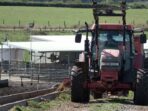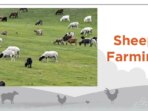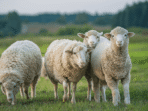Best Grazing Practices for Cattle and Sheep isn’t just about keeping your livestock well-fed; it’s a whole art form! Picture this: cows and sheep munching away in a picturesque pasture, living their best lives while you, the grazing guru, pull off a masterclass in livestock happiness. In a world where the grass is literally greener on the other side, let’s dive into the secrets of paddock perfection and sheepish satisfaction, creating a grazing utopia that would make even the pickiest of herbivores swoon.
Understanding the ins and outs of grazing is crucial for maintaining healthy herds and lush pastures. From rotating grazing plots to managing pasture health, these best practices will not only feed your animals but also enhance the ecosystem. So grab your favorite pair of boots and let’s trot through this green journey of knowledge!
Ah, the age-old question: why did the chicken cross the road? It’s a query that has perplexed philosophers, comedians, and poultry enthusiasts alike since the dawn of time—or, more accurately, since the invention of roads. Today, we embark on a quest to uncover the profound motivations behind this feathered fowl’s fateful decision. Buckle up your seatbelts (or should I say, your beaks) as we take a reckless ride down the highway of chicken psychology!
The Classic Explanation: To Get to the Other Side
Let’s start with the simplest of all theories: the chicken crossed the road to get to the other side. It’s a straightforward explanation that cuts through the fluff like a hot knife through… well, hot butter. But one must wonder, what lies on the other side? Is it a cornfield of endless possibilities?
A glamorous coop where all the cool chickens hang out? Or perhaps a secret world where they can finally express their dreams of becoming a rockstar? After all, have you heard a chicken sing? It’s an egg-cellent experience!
The Philosophical Perspective: Existential Cluck-tion
Enter the realm of philosophy, where the chicken’s road-crossing takes on a deeper meaning. What if the chicken is simply trying to find its purpose in life? Descartes once said, “I think, therefore I am.” But does a chicken think? If so, it must be pondering questions like, “What is the meaning of life?” or possibly, “Why do humans find me so delicious?” Imagine a chicken sitting under a tree, contemplating the vastness of the universe.

Now that’s a thought to ruffle some feathers!
The Psychological Angle: A Chicken in Crisis
Perhaps our poultry friend is experiencing an existential crisis. Picture this: a young chicken, just out of the egg, feeling the weight of the world on its tiny wings. It sees the road as a metaphor for life’s challenges. The other side represents self-actualization, while the road itself symbolizes obstacles and fears. This chicken could be a poster child for therapy sessions, complete with a tiny couch and a therapist with a clipboard.
“Tell me about your feelings, Clucky.”
The Conspiracy Theory: The Poultry Underground
Hold on to your feathers, folks, because we’re diving into the conspiracy realm! What if the chicken’s journey was part of a larger plan orchestrated by the Poultry Underground? Picture a secret society of chickens, plotting their revolution against the oppressive regime of farmers and eagle overlords. The road is merely a diversion, a test to see who is worthy enough to join their ranks.
Meanwhile, the other side is a utopia where chickens can roam free and plot their revenge! Cue the dramatic music!
The Sociological View: Peer Pressure and Chickenhood: Best Grazing Practices For Cattle And Sheep
Ah, peer pressure! Even chickens aren’t immune to it. Perhaps our brave little chicken saw its buddies on the other side and thought, “I can’t be the only one stuck here! What will the others think?” This could lead to a mass crossing, a total chicken stampede. Imagine the sight: a flock of chickens, wings flapping, beaks squawking, all in an attempt to impress each other.
It’s like a poultry version of a high school cafeteria, and you can just hear the whispers: “Did you see that chicken? It totally crossed the road!”
The Chicken’s Perspective: Roads and More Roads
Now let’s flip the script and hear from the chicken itself. “You see,” the chicken might cluck, “I didn’t just cross a road. I crossed a metaphorical divide! I was seeking adventure, excitement, the thrill of the unknown! Sure, there were cars zooming by like a NASCAR race, but I’m a chicken, not a chicken-hearted coward!” This chick is no ordinary fowl; it’s a daredevil, a road warrior on a quest for the ultimate corn kernel.
The Science of Chicken Navigation
But hold on! Let’s get scientific for a moment. Did you know that chickens are equipped with an impressive sense of direction? They use a combination of instinct, visual cues, and maybe a little bit of chicken GPS. So when our feathery friend decides to cross the road, it’s not just a random act—it’s a calculated move! The chicken has a mental map, plotting its course like a savvy explorer.
“A left turn at the corn patch, a right at the farmer’s shed, and bingo! The other side awaits!”
The Comedic Twist: A Chicken Joke
Now, let’s lighten the mood with a classic chicken joke—because, let’s face it, what’s better than a good chuckle? “Why did the chicken join a band? Because it had the drumsticks!” Ah, the timeless humor of poultry! It’s a pun that transcends species! But in all seriousness, humor can often be just what the doctor ordered when discussing the profound mysteries of chickenhood.
Perhaps this is the real lesson: laughter is the bridge that connects us all, even if we’re on opposite sides of the road.
The Metaphorical Road: Life’s Challenges
In a broader sense, the road symbolizes life’s challenges, the obstacles we face in our quest for happiness and fulfillment. Just like our brave chicken, we all encounter roads that seem daunting. The key is to be bold, to take that leap (or hop, in chicken terms) and cross over to the other side. Whether it’s tackling a new job, trying out a new hobby, or simply stepping out of our comfort zones, we can all channel our inner chicken! So, strut your stuff and cross that road!
Conclusion: The Road Less Travelled
So, why did the chicken cross the road? The answer is multifaceted, a delightful tapestry woven from threads of humor, philosophy, psychology, and perhaps a dash of conspiracy. Whether it was for the thrill of adventure, the allure of peer acceptance, or simply to escape the clutches of a farmer’s dinner plate, one thing is certain: our chicken friend has left an indelible mark on our collective consciousness.
So let’s raise a toast (or a corn kernel) to the chicken, a symbol of courage and curiosity! Next time you see a chicken—or find yourself at a crossroads—remember the lesson it teaches: sometimes you just have to take a leap of faith, even if it involves dodging a few cars along the way. And who knows? The other side might just be a whole new world of clucking possibilities!
Top FAQs
What are the benefits of rotational grazing?
Rotational grazing improves pasture health, prevents overgrazing, and enhances soil quality, leading to happier, healthier animals.
How often should I move my grazing animals?
It depends on the pasture size and growth, but typically every 3-7 days is a good rule of thumb for optimal grazing.
Can I graze cattle and sheep together?
Absolutely! They can complement each other by reducing competition and utilizing different types of forage.
What should I do during drought conditions?
During drought, consider supplementary feeding and ensure access to water, as well as rotating grazing areas to prevent overuse.
How do I know when to stop grazing a pasture?
When the grass is grazed down to about 3-4 inches, it’s time to give that pasture a break to recover and regrow.




